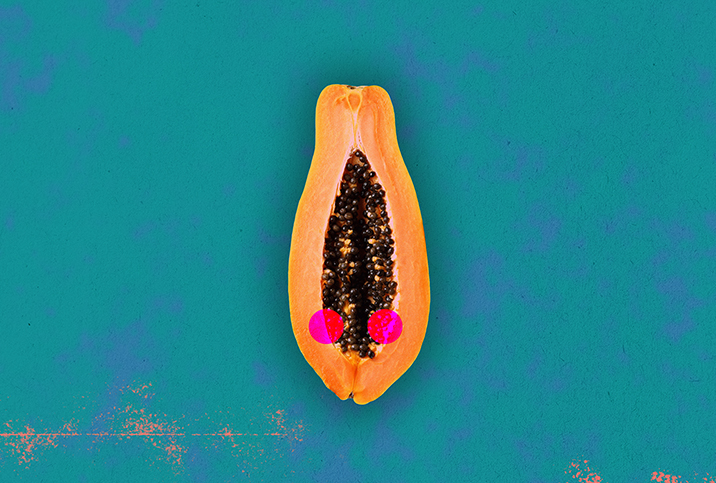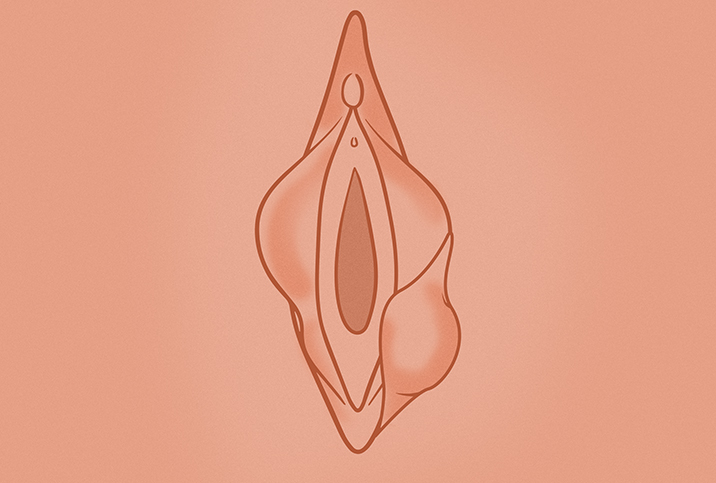Iyanna McNeely of 'Love Is Blind' Talks About Her Bartholin's Cyst

An estimated 2 percent of people with vaginas develop Bartholin's duct cysts, which are small, mucus-filled sacs near the vaginal opening. An even smaller percentage experience pain and other problems with their cysts.
Unfortunately for "Love Is Blind" star Iyanna McNeely, she was among that smaller percentage.
McNeely revealed in an Instagram video post on Feb. 11 that her cyst had caused pain and ultimately led to her hospitalization.
"Has anyone ever had a Bartholin cyst?" McNeely asked in the video. "I can't move. Your girl is in extreme pain. Why does no one talk about these? And apparently, now that I've gotten one, I'm going to keep getting them for literally no reason."
In the lengthy video, the reality TV star recounted how she went to the emergency room after "a few days of excruciating pain and my skin stretching to its limit."
"After six hours waiting in the waiting room, I finally got a room and was cut open and everything was drained—painfully, I might add," McNeely said.
After she made it home from the hospital, McNeely took a second trip to the emergency room after the pain returned hours later.
"Anyways, I'm home now with limited mobility but at least I can waddle without pain," McNeely told fans.
What are Bartholin's duct cysts?
Bartholin's duct cysts—also called Bartholin's gland cysts—can form due to an obstruction in the Bartholin's glands, the small, round glands located in the vulva that generate lubricating fluid to minimize friction during intercourse.
"The narrowing or blockage of a drainage duct leads to a backup of fluid," said Monte Swarup, M.D., an OB-GYN with Women's Health Arizona and the founder of HPV Hub.
The accumulation of mucus creates a swollen—usually painless—bump, he explained.
What causes Bartholin's cysts?
Bartholin's cysts are most common in women of reproductive age, according to research published by the American Academy of Family Physicians. The exact cause is unknown, though they are sometimes attributed to injury or infection. Some research has linked Bartholin's cysts to bacterial infections. Rarely, they may be associated with sexually transmitted infections (STIs), such as gonorrhea.
Once you've had a Bartholin's cyst, you're more likely to get one again, as McNeely noted in her Instagram post. Recurrence of this type of cyst is common, even after treatment.
How to treat a Bartholin's cyst
"If the cyst is not painful, it can be treated by using a warm compress and/or running water," Swarup said.
If there is pain, it likely means the fluid has become infected, he explained. An infected cyst creates a collection of pus or an abscess, making it red, swollen and tender. If this occurs, a healthcare provider can use a needle to drain the cyst for temporary relief, Swarup said.
"Long-term relief involves creating a new tract surgically," he added.
Bartholin's cysts are rarely anything to worry about, Swarup emphasized. However, he advised people to follow McNeely's example and seek medical attention if they notice a lump.
"You should seek medical attention when you have the lump, as it is most amenable to treatment when enlarged," Swarup said.


















